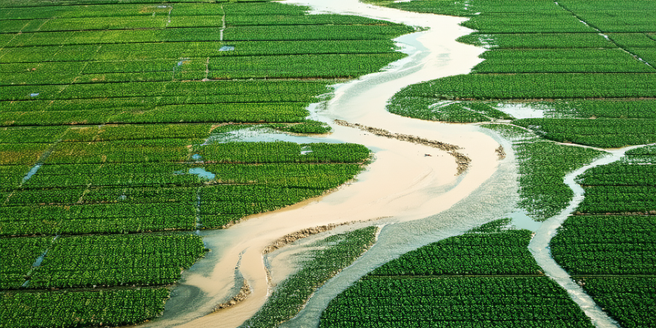
Understanding the Sources of Water Contamination
Water contamination can originate from several sources, such as agricultural runoff, industrial discharges, and urban stormwater. Agricultural activities heavily rely on fertilizers and pesticides, which can leach into groundwater or runoff into nearby water bodies. Industrial sectors, including manufacturing and mining, may release harmful chemicals directly into rivers or lakes. Urban environments contribute through stormwater, which carries pollutants like oil, heavy metals, and other toxins from surfaces like roads and rooftops. Understanding these sources is crucial in addressing the root causes of contamination. Implementing effective management strategies, such as controlling agricultural runoff through buffer zones and improving urban stormwater systems, is essential. By identifying and mitigating these sources, public health risks can be reduced, and water quality improved.
Health Impacts of Contaminated Water
Access to clean water is fundamental to health, yet contaminated water poses serious health risks. Pathogens present in polluted water can lead to diseases like cholera, dysentery, and typhoid fever. Chemical contaminants, including heavy metals and pesticides, have been linked to various chronic health issues, such as cancer and endocrine disruption. Infants and pregnant women are particularly vulnerable, facing risks such as developmental issues and birth defects. Long-term exposure to contaminated water can also have detrimental effects on liver and kidney function, alongside affecting the immune system. Addressing water contamination is not only essential for public health but also for reducing healthcare costs associated with treating waterborne diseases. Protecting water sources and investing in water treatment technologies are critical steps in safeguarding health.
Preventative Measures to Reduce Water Pollution
Reducing water pollution requires a proactive approach with various preventative measures. Implementing strict regulations on industrial discharges ensures harmful substances do not enter water bodies. Agricultural practices can be improved by using eco-friendly pesticides and fertilizers, and creating buffer zones to absorb potential runoff. Urban planning should incorporate green infrastructures that manage stormwater effectively, such as rain gardens and permeable pavements. Encouraging public engagement through education and awareness campaigns helps in fostering environmentally friendly practices at the community level. Monitoring water quality regularly is essential for early detection of pollutants, allowing for timely interventions. Additionally, investing in advanced water treatment facilities can help in removing contaminants before the water reaches consumption or recreational areas. Preventative measures are integral to protecting water resources and ensuring long-term sustainability.
Regulations and Standards for Water Safety
Regulations and standards play a critical role in ensuring water safety, providing a framework for protection against contamination. Governments and international bodies, such as the EPA and WHO, set permissible limits for pollutants in water sources, ensuring they are safe for human consumption and environmental health. Compliance with these standards is mandatory for industries and municipalities, often requiring regular monitoring and reporting. The establishment of water quality indicators allows for the identification of contamination trends, promoting timely interventions. Despite existing regulations, consistent enforcement remains a challenge. Encouraging transparency and accountability from sectors involved in water management is essential. Continuous evaluation and updating of water safety standards, considering emerging contaminants and scientific advancements, are vital to adapting to new challenges and ensuring public health.
Case Studies on Historical Contamination Incidents
Analyzing historical contamination incidents offers valuable insights into the consequences of poor water management and regulation. One well-known case is the Flint water crisis, where lead from old pipes leached into the drinking water, affecting thousands of residents and resulting in a public health emergency. Another example is the contamination of Woburn, Massachusetts’ water supplies with industrial chemicals, leading to a cluster of childhood leukemia cases. These incidents highlight the critical importance of maintaining infrastructure and enforcing regulations to prevent contamination. Studying these cases reveals common themes such as regulatory failures, lack of transparency, and the impact of cost-cutting measures. Lessons learned include the need for rigorous testing, community engagement, and swift response to initial signs of contamination. Such learnings can guide future policy and prevent similar incidents.
Future Challenges in Combating Water Contamination
The fight against water contamination is continually evolving, with future challenges necessitating innovative solutions. Climate change exacerbates water scarcity and quality issues, influencing patterns of rainfall and increasing the frequency of extreme weather events, which can wash more pollutants into water bodies. The emergence of new contaminants, including pharmaceuticals and microplastics, poses threats that current water treatment infrastructure may not effectively address. Increasing population densities and urbanization can strain existing water resources and infrastructures, leading to potential overuse and degradation. Addressing these challenges requires a multifaceted approach, integrating scientific research, advanced technologies, and adaptive management strategies. Collaborative efforts globally in policy-making and resource allocation are crucial. Investing in sustainable practices and innovations will be key to overcoming future obstacles and ensuring safe water for all.
